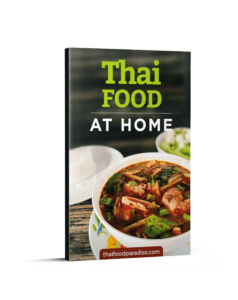6 Lesser-Known Thai Ingredients
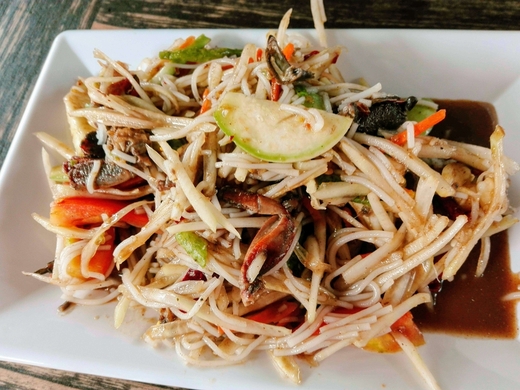
Being a tropical country, Thailand is fertile land for some funky fruits and vegetables. Coupled with the inventiveness of Thai cooks, it’s little wonder that the average two or three-week trip to the Land of Smiles barely scratches the surface of the country’s amazing cuisine. This article overviews six unusual Thai ingredients you may encounter when exploring Thai food a bit deeper.
Spondias Mombin (Hog Plum)
I still remember the moment. I was with my Thai partner ordering papaya salad in a Chiang Mai restaurant. We opted for tam sua, which is a mixture of papaya salad and fermented rice noodles.
After taking my first forkful, I noticed this salad tasted different. I had eaten papaya salad many times. But this version was funkier and more delicious. It tasted more sour than normal but also fruitier. Prodding around inside the salad, I noticed a fruit I’d never seen before.
My partner informed me the fruit was known as ma-kok (มะกอก). Research told me that in English, we call this wonderful fruit a hog plum. Scientifically known as the spondias mombin, this unusual fruit was introduced to South Asia in the 17th century by the Portguese.
In Thailand’s Isaan region and in neighboring Laos, it’s popular to add hog plums to spicy papaya salads in order to give them an extra fruity-sour kick. I really recommend seeking this version out if you are in Thailand. The restaurant above Lucky Bar in Chiang Mai serves their papaya salads with a hog plum.
Yanang Leaves
While we use cornstarch to thicken soup in the West, many people living in Northeast Thailand use yanang leaves (bai yanang). How this was figured out I have no idea, but the way Thais use bai yanang is to crush the leaves between the hands into hot water and use the water to thicken dishes.
Yanang water and leaves aren’t very strong in flavour. As mentioned they help thicken soups and curries. In particular, the water is often added to a bamboo shoot soup-curry hybrid known gaeng nor mai. The liquid itself is a very dark green colour and adding too much will cause curry to take on a shocking muddy black hue that makes it look unappetizing to say the least.
Santol Fruit (Cotton Fruit)
Very popular in Indonesia and the Philippines, people who’ve visited those areas or who live there will likely have encountered santol fruit before. However, for the rest of us, it’s probably not something you’ve seen or heard about.
Known to Thais as gra-tawn (กระท้อน), santol fruit is a popular sight in Thai markets during the period from May to August. I had never encountered one until I visited in July 2017 and went to eat at a local restaurant.
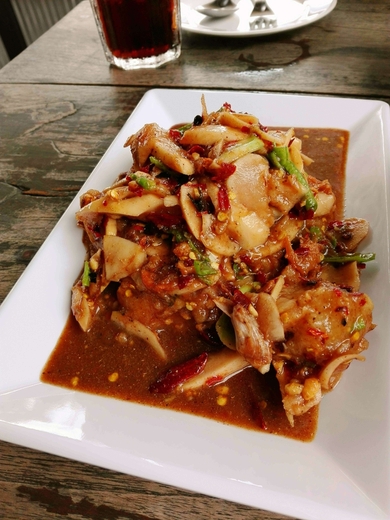
The way Thais often use santol is as a replacement for papaya in the famous som tam salad. So, if you wanted to order this, you’d look for ‘tam gra-tawn’ rather than som tam. When used in salads, the Thais like their santol to be not quite ripe, which makes it lovely and sour. If you eat the fruit ripe, expect to taste a pleasant mixture of sweetness and sourness.
Fermented Pork
Known as naem (แหนม), this fermented pork sausage is one of my very favourite ingredients in Thai food. It’s made with pork, pork skin, sticky rice, chili, garlic, sugar, and salt. It has a lovely meaty flavour with a sour twang that is difficult to describe.
The main reason I love naem so much is its use in a wonderful Thai salad known as naem khluk or yam naem. This amazing salad combines roasted peanuts, naem, chili flakes, lime juice, shallots, rice balls, fish sauce, garlic, ginger, and various herbs like sweet basil and coriander. It’s a truly outstanding dish when it’s made well.
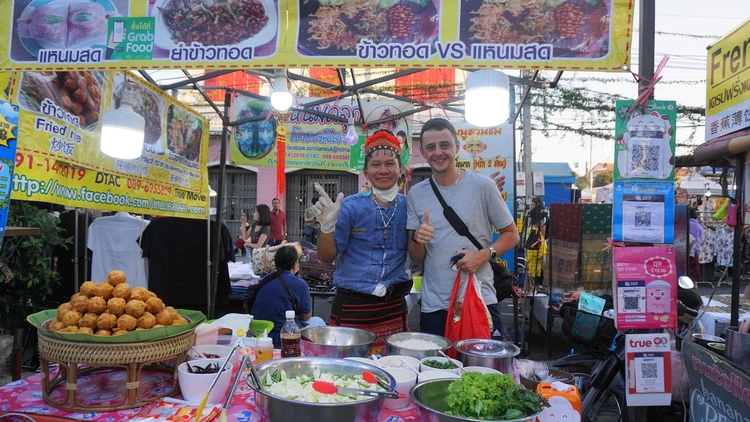
There is a vendor in Chiang Mai who makes a wonderful version, and I miss his food as I write this. You can see me with him in the above picture, taken in January 2020 during my most recent visit to Thailand. Please check his food out if you get the chance to go; you’ll find him at the city’s Saturday evening walking street market.
Snake Fruit (Salak)
Known as snake fruit due to its striking, snake-like leathery skin, salak is an extremely tangy food with a slight sweet note that is a joy to eat. In fact, it’s quite addictive. It makes your tongue tingle slightly and is worth seeking out if you’re in Southeast Asia. I have heard they are quite abundant in Indonesia but you should easily find them in Thailand at any time of the year.
Dried Red Cotton Flower
Another piece of evidence showcasing the ingenuity of northern Thai chefs, the dried red cotton flower (ngiao) is used in a very specific type of noodle dish known as nam ngiao. This noodle soup is probably my second favourite Thai noodle dish behind khao soi, and it relies on such an esoteric, unusual, and specific ingredient as the dried red cotton flower.
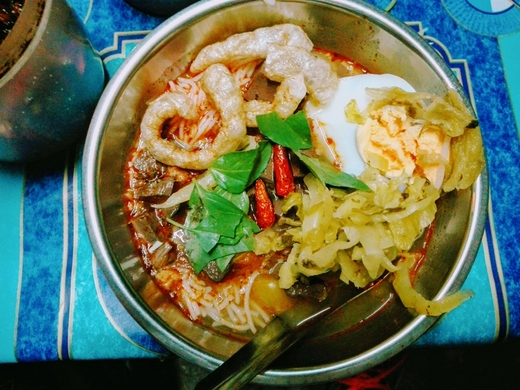
The flower adds a distinct aroma and taste to this spicy dish that has to be tasted to be understood. Alongside the red cotton flower, the soup contains fermented rice noodles, fermented soy bean discs, and chopped tomatoes. You can find nam ngiao all over Northern Thailand, from Chiang Mai to Phrae to Nan.
Closing Thoughts
I hope you enjoyed this blog post describing some of the more unusual Thai food ingredients you might encounter. If you have tasted any of these or have any other thoughts, please leave a comment below. Share on social media if you like it. And check out the Thai food blog for regular posts. Thanks.
🙂
I lived in Thailand for a few years during my 20s during which time I fell in love with Thai food. Along with my Thai partner, I cook and eat tasty Thai dishes 3 or 4 times per week. I’m here to bring you recipes, Thai food tips, and suggested cookware for making Thai food.
